This article was co-authored by Vlad Gendelman, MD and by wikiHow staff writer, Hunter Rising. Dr. Vlad Gendelman, MD is an Orthopaedic Surgery Specialist in Los Angeles, California. With over 15 years of experience, he specializes in general orthopaedic surgery, including orthopaedic trauma, sports injuries, and joint replacements. Dr. Gendelman holds a BS in Biology from the University of Southern California and received his Doctorate from the University of California at Irvine. He then completed his residency in Orthopedic Surgery at SUNY Downstate. Dr. Gendelman is board certified with the American Board of Orthopaedic Surgery and is a fellow of the American Academy of Orthopaedic Surgery. He is a member of the Los Angeles County Medical Association, the California Medical Association, California Orthopaedic Association, and the American Academy of Orthopaedic Surgery. Dr. Gendelman is a published author of multiple papers in the field of orthopaedic surgery.
There are 17 references cited in this article, which can be found at the bottom of the page.
This article has been viewed 9,817 times.
Becoming a vascular surgeon takes a lot of dedication and education, and it's usually a path that you must decide upon and prepare yourself early on, but it can be a really rewarding career that allows you to make a difference in people's lives. Our guide will show you the path you'll need to take, from earning your pre-med degree to finishing your residency and fellowship programs!
Steps
Getting an Education
-
1Get your high school diploma or GED. If you’re still in school, try to take as many science and biology classes as you can to help you learn about the body better. Be sure to focus on your coursework so you can earn the best grades possible. If you didn’t receive a high school diploma, search for a general educational development (GED) program near you and take the classes. Take the examination at the end of the class to earn a high school equivalency diploma.[1]
- Many GED courses are offered at night so you can still work full-time and take the classes afterward.
- Try to get involved with science-based extracurriculars or clubs if your high school offers any.
-
2Earn a bachelor’s degree in biology or health sciences. Pick a major that interests you in a science- or health-related field so you seem more desirable to med schools. Be sure to take at least 1 year of biology, 1 year of English, and 2 years of chemistry since these are usually the minimum requirements you need for medical school.[2] Concentrate on your academics so you can get the highest GPA you can.[3]
- Look for clubs or activities related to science or medical fields so you can connect with like-minded individuals and make new connections.
- Each medical school requires different prerequisite courses, so if you have one in mind, look up their academic requirements so you can plan what to take during your pre-med.
Advertisement -
3Take the MCAT exam so you can apply to medical school. Go online and register for The Medical College Admission Test (MCAT) during the spring before you graduate from your pre-med school. Select the nearest test center and arrive at least 15 minutes early on the scheduled date. Complete the entire multiple-choice test during the testing period and wait about 1 month to get your results back. Usually, a score around 510 is considered good, but it varies on the exam averages.[4]
- The MCAT usually lasts over 6 hours with breaks and contains sections about biological foundations; chemical and physical foundations; psychological, social, and biological foundations of behavior; and critical analysis and reasoning.
- There are many practice tests and study guides for the MCAT online.
-
4Obtain a medical degree in surgery from an accredited school. Submit an application along with your MCAT scores to an accredited med school you're interested in. Opt for electives that focus on vascular surgery during your first and second years so you’re able to start learning about procedures right away. During the third and fourth years of med school, begin doing clinicals, where you learn and train for basic procedures in a hospital setting under instructor supervision.[5]
- Connect with your instructors and other students in your courses so you can network and learn about new opportunities from them.
- If you take vascular surgery courses in the first 2 years of school, you may also be able to shadow clinical vascular surgeons early on so you can observe and learn from them.
Tip: Ask instructors or vascular surgery faculty to mentor you so you can learn from them and assist them during research projects.
Completing Your Fellowship and Certification
-
1Choose a 5-2 fellowship for certification in vascular and general surgery. In a 5+2 program, you’ll spend the first 5 years completing a clinical residency for general surgery. After that, you will spend 2 years focusing on vascular surgery practices so you can gain experience in the field. If you plan on opening a private practice or you also want the option to work as a general surgeon, look for 5+2 fellowship options for your residency.[6]
- Some locations may offer all 7 years at the same location, while others may have you complete your general residency and vascular fellowship separately.
- If you performed well in medical school, you may qualify for a 4+2 early specialization program, which allows you to start performing vascular surgery sooner.
- Residencies are when you work in a hospital or clinic for basic surgical procedures while fellowships are the training periods where you learn specialized skills in a specific branch of medicine.
-
2Select a 0+5 integrated fellowship if you only want to focus on vascular surgery. Integrated fellowships usually have 2 years of general surgery training immediately followed by 3 years of training for vascular surgery. However, an integrated fellowship will not allow you to get certified for general surgery, so it may not be the right path if you plan on starting your own practice or changing careers later on.[7]
- You can usually see the monthly breakdown of when you’ll learn certain procedures if you look at the university clinic’s website.
-
3Apply for an accredited fellowship program at a clinic where you want to study. Start looking for fellowships during your last year in medical school so you’re able to start right when you graduate. Check online residency and fellowship boards so you can see a list of accredited clinics that offer the type of program you want to complete. Click on the programs that interest you the most from the list so you can access their individual applications. Fill out the application entirely and submit them online. so you can perform surgeries and continue learning about correct procedures in a real work setting.[8]
- You can look for open residencies and fellowships here: https://services.aamc.org/eras/erasstats/par/index.cfm
- During your residency and fellowship, you will receive training and gain operating experience so you can learn specialized skills for vascular surgery and improve.
- Finding a vascular surgery residency is moderately competitive, but usually most people that apply are able to find one.
-
4Take the Vascular Surgery Qualifying Exam when you finish your fellowship. Fill out the application for the Qualifying Exam (QE) online to receive a registration letter. Register for the test date listed in the letter to reserve a spot at the nearest testing center. Arrive at your testing center at least 15 minutes early and complete the exam on the provided computer. You have 4 opportunities within 4 years to take and pass the exam before you need to register again.[9]
- You can find registration for the QE here: http://www.absurgery.org/default.jsp?app_vqe_inst. You will need to make an account on the website before you’re able to register.
- The QE consists of 250 multiple-choice questions about different types of patient care in regards to vascular surgery and is given in 4 blocks that are 90 minutes each.
- You will get the results of the qualifying exam within 1–2 months of taking it.
- You can fill out the application online here: http://www.absurgery.org/default.jsp?app_vqe_inst.
-
5Complete the Certifying Exam after you pass the QE. You will only receive an email or letter to register for the Certifying Exam (CE), which is only held during the spring in Philadelphia, when you successfully pass the QE. Register for the CE online and pay any fees involved. Answer the questions as clearly and detailed as possible that best manage the problems you’re asked about.[10]
- The exam consists of 3 consecutive oral sessions that are each 30 minutes, and the examiners will evaluate your clinical skills while diagnosing common problems with vascular surgery.
- You will get results within 7 days of the exam, and you’ll get your vascular surgery certificate within 6 months.
- You will have 3 opportunities within a 3-year period to complete and pass the CE.
Tip: You need to take the Qualifying Exam and the Certifying Exam within 7 years of completing your training fellowship. Otherwise, you will need to need to find a re-admissibility program in order to enter the certification process again.
Finding a Position
-
1Write a CV that lists your education and work experience. Make sure your name and any title you hold are listed at the top of the page in the largest font. List all of your educational history and the years that you attended, including any relevant electives or courses. Then, write down all of your clinical experience and the duties that you performed there to show prospective employers what you’ve been responsible for in the past. [11]
- Use a font that’s easy to read, such as Arial or Times, and use bullet points to help employers find your information easier.
- Keep your CV limited to about 2–3 pages so it isn’t too overwhelming to look at.
- You may also include any research or publications that you’ve done in your CV.
-
2Check job boards for open positions at hospitals or private practices. Look online for job postings on medical sites or sites dedicated to vascular surgery to see which positions are open. Look at the requirements for each role you’re interested in to see if you meet their qualifications. Fill out an application online and send a copy of your CV to the employer to show that you’re interested.[12]
- You can find postings for vascular surgeons here: https://svs.careerwebsite.com/jobs/.
- You may also be able to find positions listed on non-medical job boards.
-
3Reach out to medical schools if you want to teach surgery to others. Send an email or call the dean of a medical school or clinic where you want to work and let them know about your interest. Ask them if they have any open positions for vascular surgeons or see if they know of any places that are looking. Submit any application material as well as your CV to the potential schools so they can see if you’re qualified for the positions.[13]
- Talk to connections you made while you were in med school or from your residencies to see if they know of any open positions.
-
4Join a professional group for vascular surgery to learn about open positions. Professional groups or societies are great ways to network with like-minded individuals and learn about new openings. Search online for a group, such as the Society for Vascular Surgery (SVS) or the World Federation of Vascular Societies, and see what they have to offer. While some groups require you to pay a membership fee, others only need you to register an account on their site.[14]
- You can find a list of groups that you can join here: https://vascular.org/about-svs/affiliated-organizations.
- You may also find specific professional groups for your state or region.
-
5Interview with the prospective employers to see if you’re a good fit. Arrive at least 15 minutes early to the interview so you don’t feel rushed. Mention qualities about yourself that you can bring to the clinic to help persuade the employer. Ask about the overall goals of the clinic and how the faculty interact with one another to see if you’d make a good addition to the team. If you leave a good impression, you may be asked back for another interview.[15]
- The employer will usually spend the entire day walking you through the clinic or practice so you can see what the work environment is like.
Tip: Try to talk to other employees at the workplace to hear about their experiences working there. That way, you can get multiple points of view.
-
6Sign the employer’s contract when you want to accept a position. When the employer offers a position, they will have a contract that lists your base salary and how long you’ll be employed at the clinic. Read over the contract carefully and ask the employer any lingering questions you have about the terms. If you agree with all of the terms, sign the contract so you can start working. Otherwise, try to negotiate with the employer so you can find terms that work for both of you.[16]
- Contracts will also have information about legal issues, such as malpractice insurance, non-compete agreements, or partnerships.
- Every contract will vary, so make sure you check the terms on each one you receive.
-
7Get used to working long and demanding shifts. Your workday usually starts early in the morning and finishes late in the evening, so you may work close to 60–70 hours each week. Usually, you will spend 2–3 days in the operating room while the other 2 days will be in clinics. In addition, you may need to be on call during off-hours in case of an emergency. Make sure you get enough rest between shifts so you’re alert and ready for the next day.[17]
- Vascular surgeons usually have an average salary of $398,636 USD per year.[18]
- Working in vascular surgery can be a high-stress lifestyle, so be sure to take care of your personal and mental health.
Warnings
- Working as a vascular surgeon involves long hours that can be stressful and demanding. Make sure you’re able to manage your own health as well.⧼thumbs_response⧽
References
- ↑ https://bestaccreditedcolleges.org/articles/careers-and-education/how-can-you-become-a-vascular-surgeon.html
- ↑ https://students-residents.aamc.org/applying-medical-school/applying-medical-school-process/medical-school-admission-requirements/admission-requirements/
- ↑ https://www.ama-assn.org/residents-students/preparing-medical-school/which-undergrad-majors-are-best-med-school
- ↑ https://students-residents.aamc.org/applying-medical-school/taking-mcat-exam/about-mcat-exam/
- ↑ https://medical.rossu.edu/about/blog/types-of-surgeons
- ↑ https://www.upmc.com/services/heart-vascular/about/training/vascular-surgery-residencies-fellowships
- ↑ https://pubmed.ncbi.nlm.nih.gov/20022205/
- ↑ https://services.aamc.org/eras/erasstats/par/display.cfm?NAV_ROW=PAR&SPEC_CD=450
- ↑ http://www.absurgery.org/default.jsp?certvsqe
- ↑ http://www.absurgery.org/default.jsp?certvsce
- ↑ https://www.ncbi.nlm.nih.gov/pmc/articles/PMC5673141/
- ↑ https://svs.careerwebsite.com/jobs/
- ↑ https://vascular.org/news-advocacy/how-successfully-find-your-first-job
- ↑ https://vascular.org/about-svs/affiliated-organizations
- ↑ https://vascular.org/news-advocacy/how-successfully-find-your-first-job
- ↑ https://vascular.org/news-advocacy/how-successfully-find-your-first-job
- ↑ https://meded.ucsf.edu/md-program/current-students/resources-current-students/advising-and-career-development/career-advisors/career-information-vascular-surgery
- ↑ https://www.salary.com/research/salary/benchmark/surgeon-vascular-salary


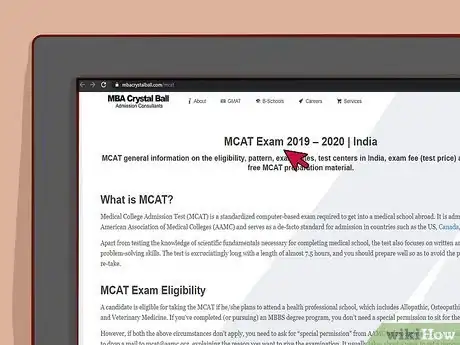
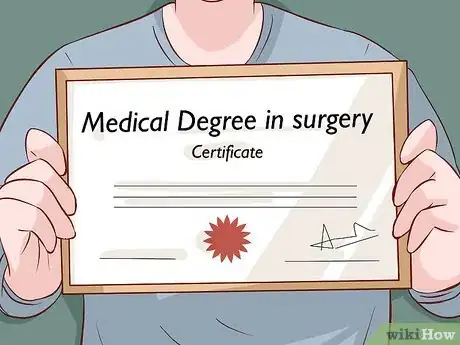

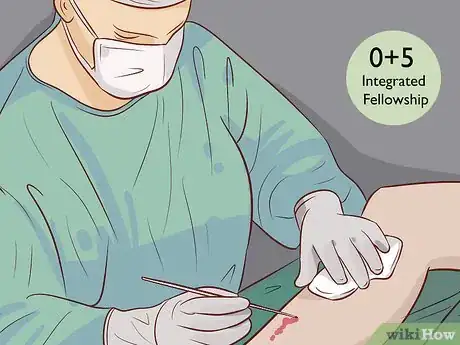
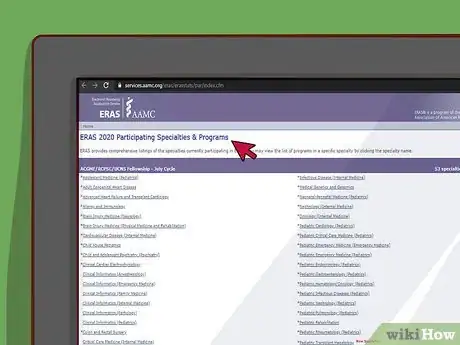
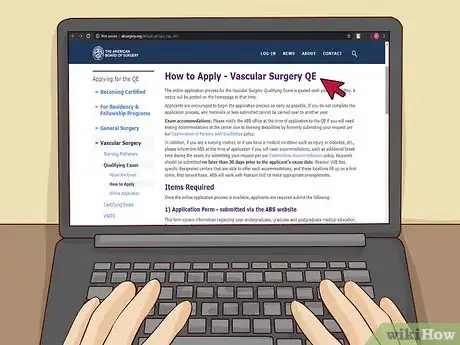


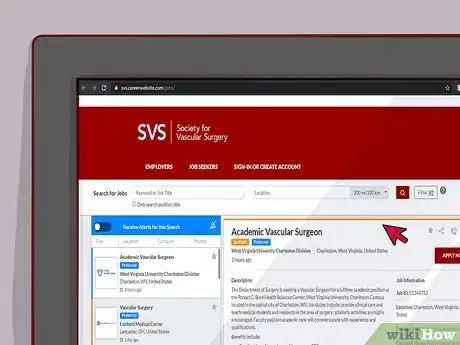

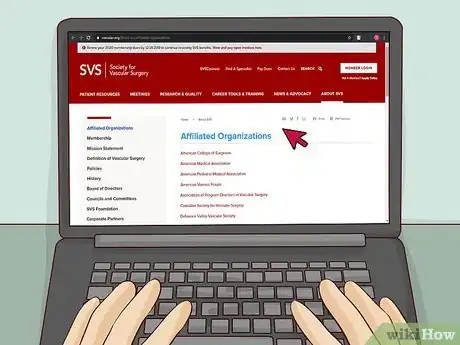































































Medical Disclaimer
The content of this article is not intended to be a substitute for professional medical advice, examination, diagnosis, or treatment. You should always contact your doctor or other qualified healthcare professional before starting, changing, or stopping any kind of health treatment.
Read More...